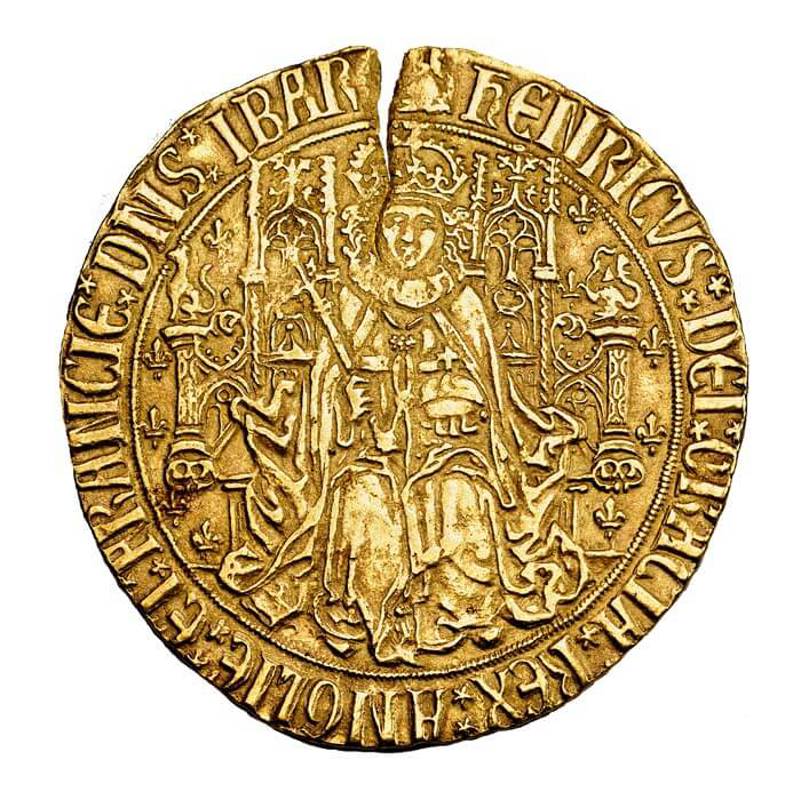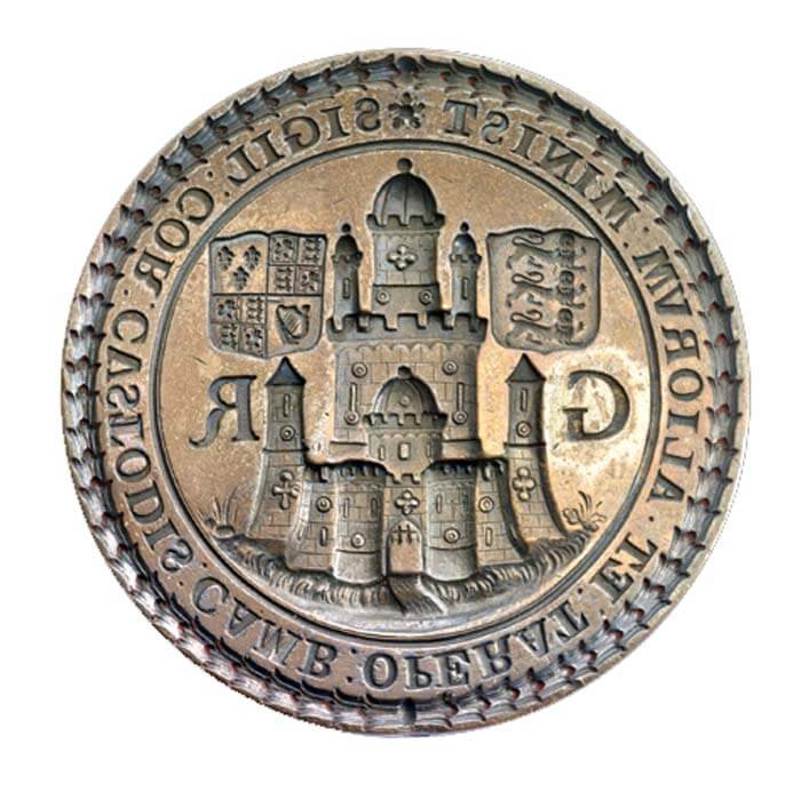Tudor half-sovereign
Below you can find more information on the history and specifications of Tudor half-sovereigns.
1465
Pre-dating the sovereign by a couple of decades, a 10-shilling coin was issued for the first time during the reign of Edward IV. But this fine gold coin and its direct descendants are known as ryals rather than half-sovereigns and thus are not considered here.
1544
The name ‘half-sovereign’ is used for the 10-shilling pieces in less than fine gold that were issued from 1544 onwards. It follows therefore that the first half-sovereigns were struck during the Great Debasement.
1544-51
Temporary mints were opened to facilitate the debasement. In addition to the Tower, half-sovereigns were struck at establishments in Southwark, at Durham House on the Strand and at Bristol Castle.
1551-53
Following the abandonment of debasement, half-sovereigns in crown (916) gold formed part of the final coinage of Edward VI.
1553-58
Only fine gold coins were issued during the reign of Queen Mary and thus no half-sovereigns were struck.
1558-71
Half-sovereigns were struck in significant numbers during the early years of the reign of Elizabeth I – unlike crown gold sovereigns which would not be issued until 1593.
1560-72
The first major experiment in England with coinage machinery was conducted by Eloy Mestrell. A separate minting establishment equipped with a screw press was set up and operated in the Tower, alongside the main mint where hand-held tools continued in use.
Half-sovereigns were struck on Mestrell’s screw press from 1561 to 1568.
1571-93
No half-sovereigns were struck during a twenty-year period in the middle of the reign, when only fine gold coins were issued.
1593-1603
Half-sovereigns were once again struck in significant numbers as part of the final gold coinage of Elizabeth I.
1601
The weight of all coins was slightly reduced to accommodate a modest increase in the mint price for bullion.
1603-04
The half-sovereigns issued at the start of James I’s reign were the last coins to bear the name for more than two centuries. Gold coins of 10 shillings were issued in the years that followed – but they were now known as double-crowns.
Specifications and design
For the sake of clarity, issues of the Tudor half-sovereign can be usefully divided into two groups: half-sovereigns of the Great Debasement; and half-sovereigns struck later.
The tables below provide images of every major design type of the Tudor half-sovereign.
View list of inscriptions and their translations
IHESUS AUTEM TRANSIENS PER MEDIUM ILLORUM IBAT
But Jesus, passing through the midst of them, went His way (Luke 4:30)
TIMOR DOMINI FONS VITAE
The fear of the Lord is a fountain of life (Proverbs 14:27)
SCUTUM FIDEI PROTEGET EUM/EAM
The shield of faith shall protect him/her
LUCERNA PEDIBUS MEIS VERBUM EST
Thy word is a lamp unto my feet (Psalms 119:105)
EXURGAT DEUS ET DISSIPENTUR INIMICI EIUS
Let God arise and let His enemies be scattered (Psalms 68:1)
Half-sovereigns of the Great Debasement
|
Issued |
1544 – 1550 |
|
Face value |
10 shillings |
During the Great Debasement, half-sovereigns were issued at four different standards.
| Standard 1 | Standard 2 | Standard 3 | Standard 4 | |
|---|---|---|---|---|
| Issue dates | 1544 – 45 | 1545 – 46 | 1546 – 51 | 1549 – 50 |
| Weight | 6.48g | 6.22g | 6.22g | 5.49g |
| Fineness | 23 carat (958) | 22 carat (916) | 20 carat (833) | 22 carat (916) |
Debasement: Henry VIII type 1
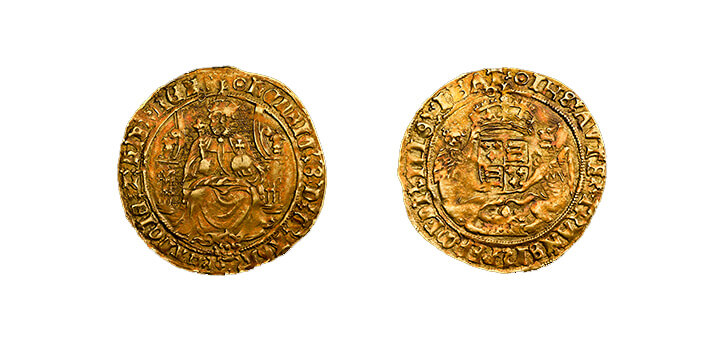
The annulets, or small rings, visible on the inner circle on both the obverse and reverse – just to the left of centre at the top – may possibly be secret marks inserted by the mint to indicate the reduction in 1546 to 20 carat gold.
Debasement: Henry VIII type 2
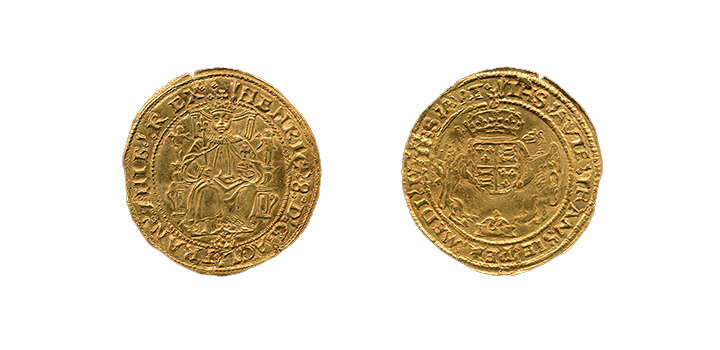
Following the accession of Edward VI, coins of a number of denominations continued to be issued in the name of the Henry VIII for several years. But the posthumous half-sovereigns, all struck in 20 carat gold, are particularly remarkable as they combine the name of the old king with the youthful portrait of the new.
Debasement: Edward VI type 1
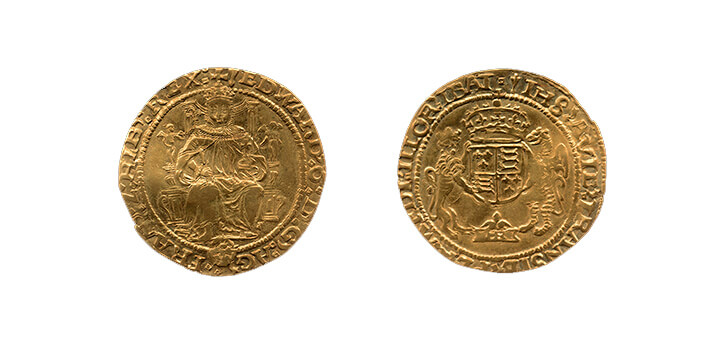
A tentative issue of half-sovereigns bearing the name of Edward VI was struck in 1547. It is surely an indication of just how tentative this issue was that no reverse dies were made bearing the letters ER on the panel below the shield – all the coins were struck with HR dies.
Debasement: Edward VI type 2
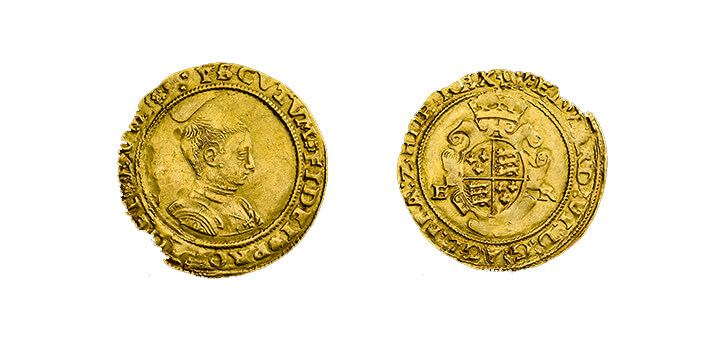
The designs of the new 22-carat half-sovereigns issued from 1549 are entirely novel, the first issue showing a bare-headed bust of the king in profile on the obverse and an oval-shaped shield with garniture on the reverse.
Debasement: Edward VI type 3
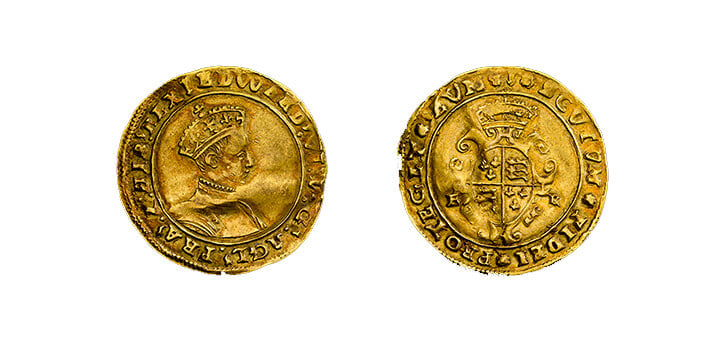
With the addition of a crown to the royal portrait, the design of the half-sovereign was very similar indeed to that of contemporary shillings. It comes as no surprise, therefore, to find a case recorded in 1601 of an Edward VI shilling being gilded and passed as a half-sovereign.
Edward VI – Durham House mint
Debasement: Edward VI type 4
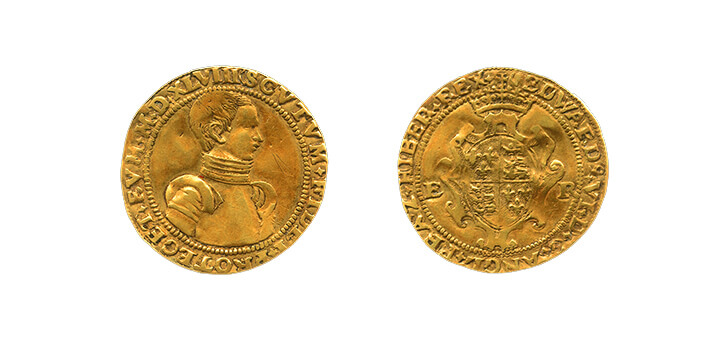
With its own engraver pursuing his individual course, the Durham House mint produced some highly distinctive half-sovereigns. The first of these, known from a single specimen held at the British Museum, carries a half-length portrait and includes the date 1548 in roman numerals. Assuming it is not a pattern, this coin is the earliest dated piece in the English series – although the reference to 1548 is probably an example of old-style dating for what we would now consider early 1549.
Debasement: Edward VI type 5
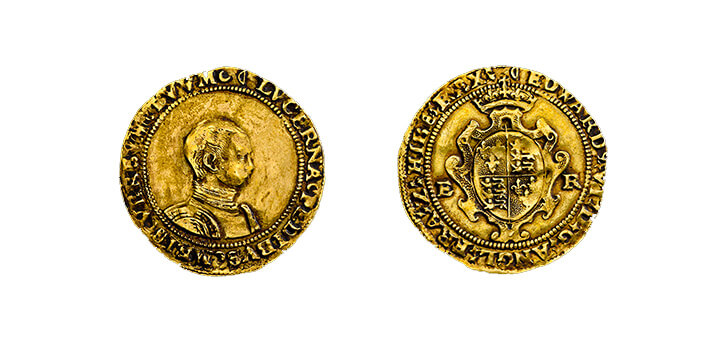
A second type of Durham House half-sovereign, of which there is a specimen in the Royal Mint collection, is broadly similar to the bare-headed pieces struck elsewhere but it bears an inscription seen on no other English coin: LUCERNA PEDIBUS MEIS VERBUM EST.
Debasement: Edward VI type 6
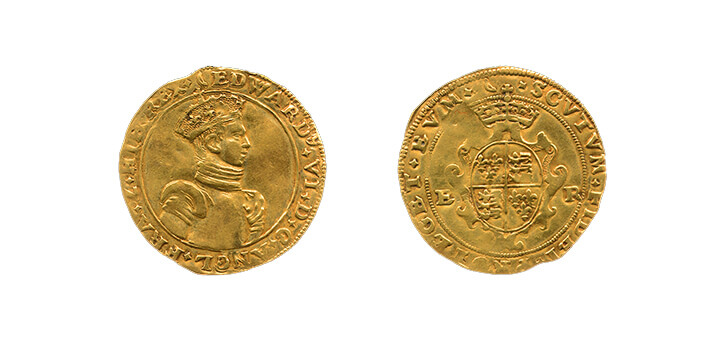
For the third type from Durham House, there is once again only a single surviving specimen held at the British Museum. The half-length portrait is reminiscent of the first type but the king is now shown wearing a crown.
Half-sovereigns struck after the Great Debasement
|
Issued |
1551 – 1604 |
|
Face value |
10 shillings |
|
Weight |
1551 – 1601 |
|
Fineness |
916 gold |
Post-debasement: Edward VI
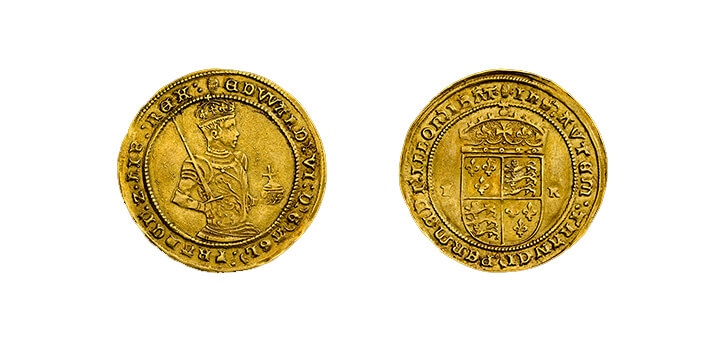
The reverse for the new half-sovereigns of 1551 consisted of a plain shield with a crown above and the monarch’s initials to either side – a basic arrangement that would remain essentially the same for the rest of the half-sovereigns.
Post-debasement: Elizabeth I type 1
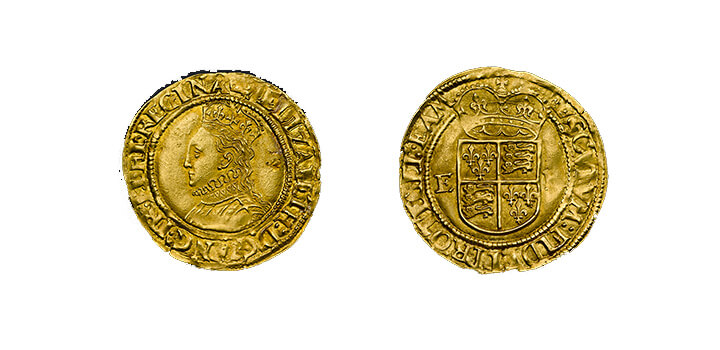
The crowned portrait of Elizabeth I that appeared on her early hammer-struck half-sovereigns, and indeed the half-length portrait used on the final issue of Edward VI, may be credited to Derek Anthony – chief engraver at the Royal Mint from 1551 to 1596.
Post-debasement: Elizabeth I type 2
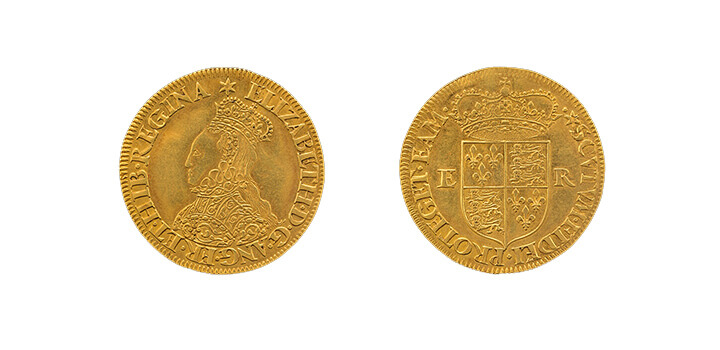
The coins struck on the screw press (see key dates 1560-72) were noticeably superior in appearance, but the machinery was relatively expensive to operate and Mestrell’s establishment was shut down in 1572. Mestrell himself turned to counterfeiting and he was almost certainly hanged a few years later.
As well as providing the technical expertise for the screw-press mint, Mestrell was probably also responsible for preparing his own dies.
Post-debasement: Elizabeth I type 3
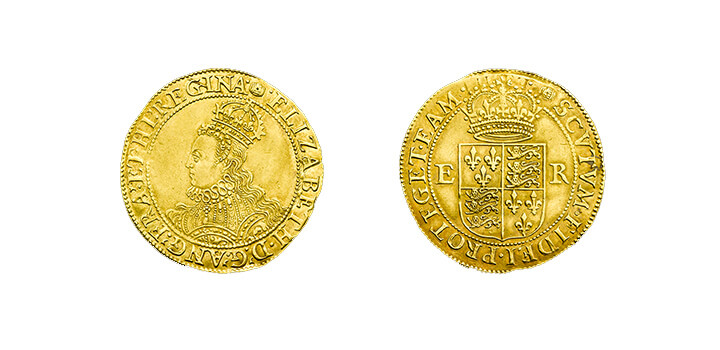
Although Derek Anthony continued to hold the position of chief engraver, the work itself appears to have been taken on by his son, Charles, from the late 1580s. Thus it seems clear that the remarkable portrait which appeared on the crown gold coinage from 1593 was engraved by Charles.
The office of chief engraver would formally pass to Charles in 1596, and he in turn would be succeeded by his son, Thomas, in 1615.
Post-debasement: James I
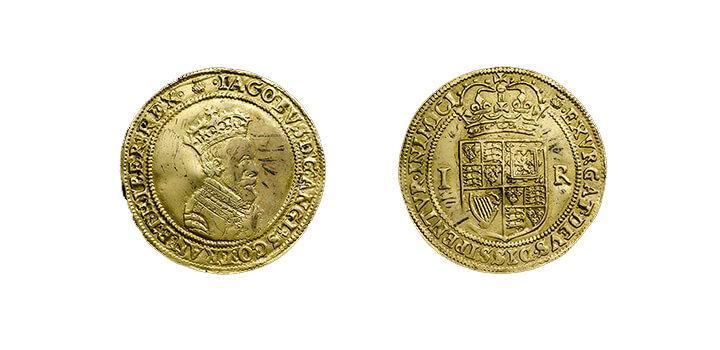
On the earliest coins of James I, including the half-sovereigns, a thistle was used as the mintmark – located at the start of the inscriptions. The choice was appropriate enough for a king newly arrived from Scotland.
The images on this page are from the Royal Mint Museum except for the following which are © Trustees of the British Museum: Debasement, Henry VIII type 2; Debasement, Edward VI type 1; Debasement, Edward VI type 4; Debasement, Edward VI type 6; Post-debasement Elizabeth I type 2
You might also like
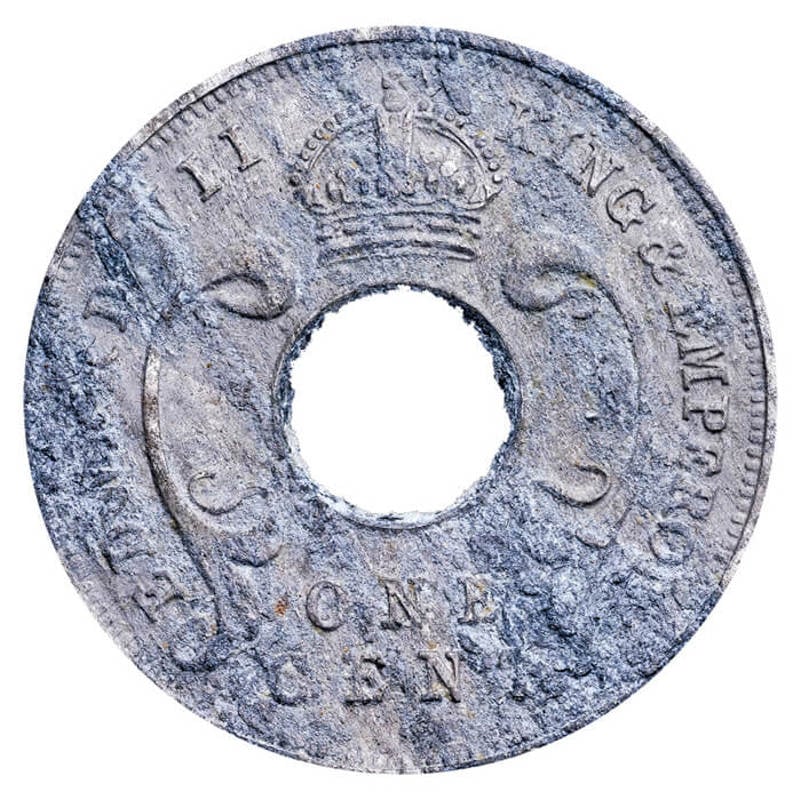
The Value of Small Change
It is important not to overlook even small coins in poor condition as they can also tell a fascinating story.
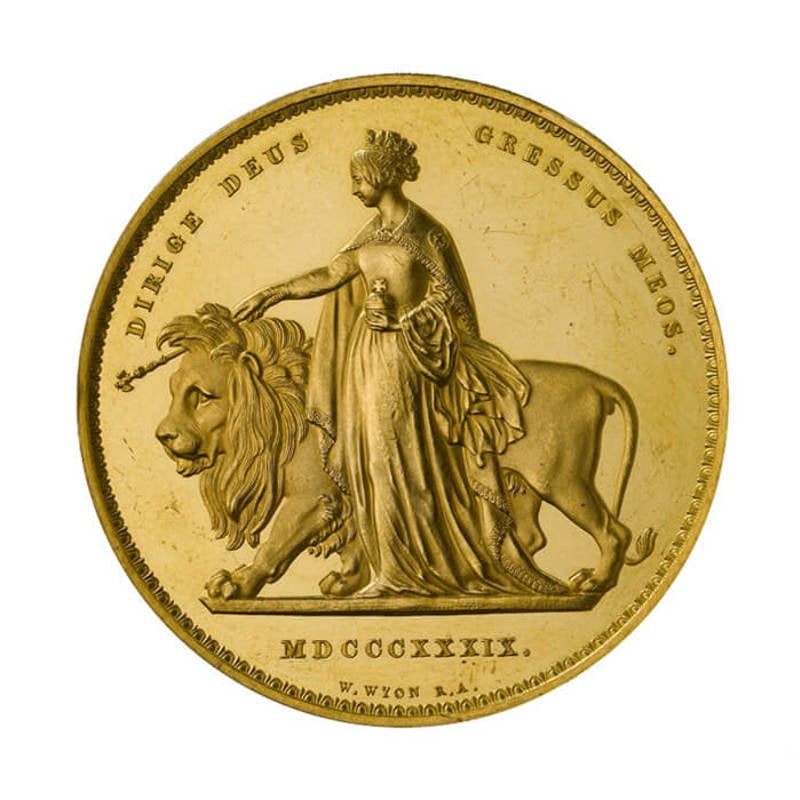
Una and the lion five-pound piece
The gold five-pound piece of 1839 is arguably one of the most beautiful coins in the world.

